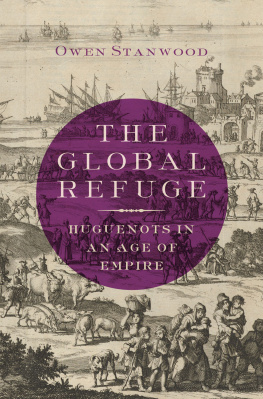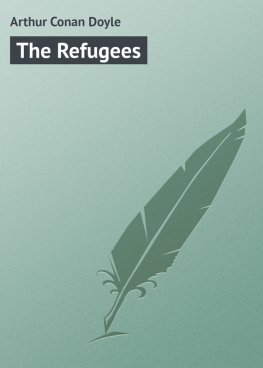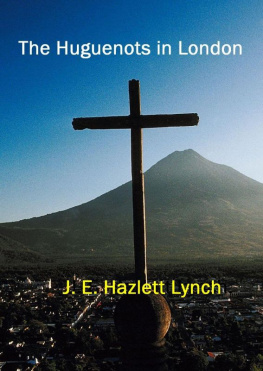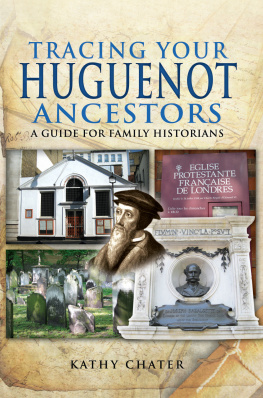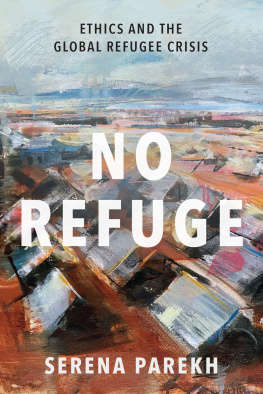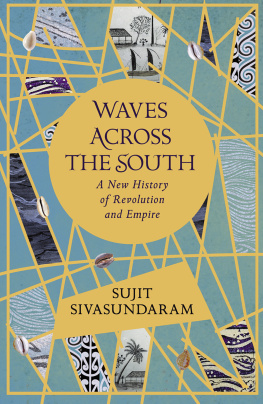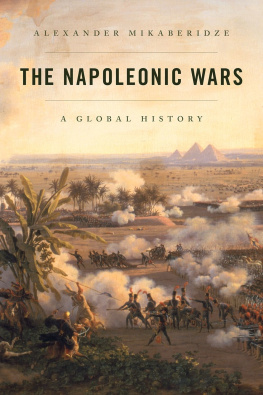The Global Refuge

Oxford University Press is a department of the University of Oxford. It furthers the Universitys objective of excellence in research, scholarship, and education by publishing worldwide. Oxford is a registered trade mark of Oxford University Press in the UK and certain other countries.
Published in the United States of America by Oxford University Press
198 Madison Avenue, New York, NY 10016, United States of America.
Oxford University Press 2020
All rights reserved. No part of this publication may be reproduced, stored in a retrieval system, or transmitted, in any form or by any means, without the prior permission in writing of Oxford University Press, or as expressly permitted by law, by license, or under terms agreed with the appropriate reproduction rights organization. Inquiries concerning reproduction outside the scope of the above should be sent to the Rights Department, Oxford University Press, at the address above.
You must not circulate this work in any other form and you must impose this same condition on any acquirer.
CIP data is on file at the Library of Congress
ISBN 9780190264741
eISBN 9780190264765
For JZ
Contents
This book exists because I wanted to go to Switzerland. In early 2010 Phil Benedict invited me to a swanky, weeklong conference at a former utopian colony overlooking a lake in the Swiss-Italian Alps. My charge was to talk about Huguenots and the Whig historical traditionsomething I knew almost nothing about. But I longed to spend that week in the mountains, and the conference convinced me that the global story of the Huguenot Refuge was a tale worth telling. I am grateful to Phil for inviting me and then providing encouragement as I started this project, and to all of the participants at that conference for their inspiration. It ended up being the start of a long journey that took me around the world in search of the traces of refugees. It was difficult at times, but extremely rewarding, thanks to the many friends, acquaintances, and strangers who helped along the way.
Like the Huguenots who counted on states, churches, and companies for assistance, I also depended on institutions. The first and most important was the John Carter Brown Library, which offered me a fellowship where I read widely in political economy and developed what eventually became the argument of this book. The JCB has welcomed me back many times since and become my intellectual home, and I must thank Neil Safier and all the staff there for their support, as well as the fellows in the fall of 2011 for their inspiration. In particular, I got to know Alexandre Dub, who has taught me more about the French Atlantic world than almost anyone. After leaving the JCB I set out for the United Kingdom, where a Newberry Library/British Academy grant and an Eccles Visiting Professorship at the British Library allowed me to complete much of the primary research for the book. These grants also got me close enough to continental Europe to make a number of research trips. I am grateful to many librarians and archivists around the continent, from Zurich to The Hague to Aix-en-Provence, who welcomed a clueless American into their reading rooms. Without their heroic efforts to preserve these materials, this book would not existnor would any historical scholarship. Finally, I must acknowledge all the old and new friends who kept me company on my travels, above all Karen OBrien and James Jones in London, who opened their home to me so many times and made that city not just more affordable but also much more enjoyable.
Closer to home, I benefited greatly from the intellectual community at Boston College and in the greater New England area. The Morrissey College of Arts and Sciences and the Clough Center for Constitutional Studies at BC supported numerous research trips, including a phenomenal weeklong journey to South Africa, where Jaco Van Der Merwe showed me around the Western Cape Archives. My colleagues in the History Department always supported my endeavors, in particular Ginny Reinburg, Thomas Dodman, and Kevin Kenny. Nonetheless, it is above all my students who have made BC such an engaging place. I am especially grateful to my former and current doctoral students, several of whom served as research assistants for this project and all of whom asked tough questions and shared their perspectivesJared Hardesty, Craig Gallagher, John Morton, Michael Bailey, and Daniel Crown. Marie Pellissier, who is now an early Americanist in her own right, also provided invaluable research assistance.
Slightly farther down the road, the School of Historical Studies at the Institute for Advanced Study gave me a fellowship at just the right time to start putting my thoughts on to the page. Spending a year at the institute was as close to being in Eden as a scholar could imagine. I am grateful to everyone there, but especially Jonathan Israel, for welcoming me, and to my fellow early modernist members, especially Adam Beaver, Nicole Reinhardt, and Marco Barducci, for their excellent camaraderie. In addition, I have to acknowledge all the creatures of the institute woodsdeer, frogs, turtles of all sorts, groundhogs, and above all the great horned owlsfor providing companionship as I wandered through the forest contemplating early modern religious history.
It takes far more than a village to write a global history, as I was constantly coming to the limits of my own historical knowledge. I called on numerous people for advice, and many others shared research tips, sources, and their own knowledge on the many people and places mentioned in this book. I am grateful to all my old friends and mentors who continue to support me, especially Tim Breen, Max Edelson, Alison Games, Karl Gunther, Evan Haefeli, Chris Hodson, Mark Peterson, Dan Richter, Brett Rushforth, Phil Stern, and Scott Sowerby. Beyond this old cadre I made many new friends while working on this project, especially at the many conferences, seminars, and lectures where I shared my work. Many of them shared their wisdom, in particular David Bell, Catherine Brekus, Jon Butler, Kate Carte, Leslie Choquette, Linda Colley, Brian Cowan, Natalie Zemon Davis, Allan Greer, Franois Furstenberg, Katharine Gerbner, Jessica Harland-Jacobs, Lauric Henneton, Eric Hinderaker, Wim Klooster, Peter Mancall, Ben Marsh, Laura Mitchell, Andy Murphy, Elodie Peyrol, Jenny Hale Pulsipher, Dana Rabin, Mark Valeri, Michiel van Groesen, and Grant Tapsell. For a project like this I must also thank my language teachers: Wijnie de Groot and Frans Blom tried, and sort of succeeded, in teaching me early modern Dutch, while Silvia Calligaro immensely improved my French.
As I discovered in the mountains of Switzerland, the world of Huguenot history is vast, fascinating, and somewhat intimidating. I am grateful to other scholars of le Refuge for welcoming me into the camp. Many scholars influenced me with their scholarship and encouraged me in conversation and correspondence, including Mickal Augeron, Phil Benedict, Hubert Bost, Paula Carlo, Pieter Coertzen, Hugues Daussy, Michael Green, Neil Kamil, Carolyn Chappell Lougee, Ray Mentzer, Ruth Whelan, and the late Myriam Yardeni. But two scholars really made this book possible. Susanne Lachenicht inspired me with her knowledge and erudition, provided extensive comments on my work, and encouraged me to move forward even at times when I was not sure of my own contributions. Bertrand Van Ruymbeke, the great historian of the Atlantic Refuge, became not just a reader and critic of my work but a collaborator and a friend. He has read most of the manuscript and offered innumerable suggestions, but more than that, he has convinced me that I am doing something worthwhile and important.

